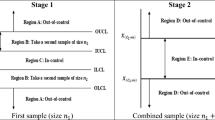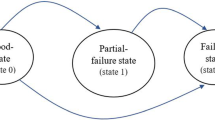Abstract
The notion of critical path is a key issue in the temporal analysis of project scheduling in deterministic setting. The very essence of the CPM consists in identifying the critical path, i.e., the longest path in a project network, because this path conveys information on how long it should take to complete the project to the project manager. The problem how can a stochastic counterpart of the deterministic critical path be defined is an important question in stochastic PERT. However, in the literature of stochastic PERT this question has so far almost been ignored, and the research into the random nature of a project duration has mainly been concentrated on the completion time in stochastic PERT in which any concrete special path is not specified. In the present paper we attempt to take first steps to fill this gap. We first developed a probabilistic background theory for univariate and bivariate marginal distributions of path durations of stochastic PERT whose joint path durations are modelled by multivariate normal distribution. Then, a new probabilistic approach to the comparison of path durations is introduced, and based on this comparison we define the concept of probabilistically critical path as a stochastic counterpart of the deterministic critical path. Also, an illustrative simple example of PCP and numerical results on the established probability bounds are presented.
Similar content being viewed by others
References
Anderson TW (1955) The integral of a symmetric unimodal function over a symmetric convex set and some probability inequalities. Proc Am Math Soc 6: 170–176
Anderson TW (1986) An Introduction to multivariate statistical analysis, 2nd edn. Wiley, New York
Azoran A (2006) Bicriteria shortest path in networks of queues. Appl Math Comput 182: 434–442
Birge JR, Maddox MJ (1995) Bounds on expected project tardiness. Oper Res 43(5): 838–850
Charnes A, Cooper W, Thompson G (1964) Critical path analysis via chance constrained and stochastic programming. Oper Res 12: 460–470
Dodin B (1985) Bounding the project completion time distribution in PERT networks. Oper Res 33: 862–880
Elmaghraby SEE (2000) On the criticality and sensitivity in activity networks. Eur J Oper Res 127: 220–238
Fatemi Ghomi SMT, Hashemin SS (1999) A new analytical algorithm and generation of Gaussian quadrature formula for stochastic networks. Eur J Oper Res 114: 610–625
Iida T (2000) Computing bounds on project duration distribution for stochastic PERT. Nav Res Logist 47(7): 559–580
Kulkarni VG, Adlakha VG (1986) Markov and markov-regenerative PERT networks. Oper Res 34: 769–781
Lehmann EL (1966) Some concepts of dependence. Ann Math Stat 37: 1137–1153
Malcolm DG, Roseboom JH, Clark CE, Fazar W (1959) Application of a technique for research and program evaluation. Oper Res 7(5): 646–669
Martin J (1965) Distribution of the time through a directed acyclic network. Oper Res 13: 46–66
Monhor D (1987) On the application of concentration function to the PERT. Math Operationsforsch Stat Ser Optim 14: 237–244
National Bureau of Standards: (1953) Tables of normal probability, applied mathematics series 23. US Government Printing Office, Washington
National Bureau of Standards: (1959) Tables of the bivariate normal distribution function and related functions, applied mathematics series 50. US Government Printing Office, Washington
Plackett RL (1954) A reduction formula for normal multivariate integrals. Biometrika 41: 351–360
Prekopa A, Long J (1992) New bounds and approximations for the probability distribution of the length of the critical path. RUTCOR Res Rep RRR 16: 1–22
Schmidt GV, Grossmann IG (2000) The exact overall time distribution of a project with uncertain task durations. Eur J Oper Res 126: 614–636
Sculli D (1983) The completion time of PERT networks. J Opl Res Soc 34: 155–158
Slepian D (1962) The one-sided barrier problem for Gaussian noise. Bell Syst Tech J 41: 463–501
Williams TM (1992) Criticality in stochastic networks. J Opl Res Soc 43(4): 353–357
Author information
Authors and Affiliations
Corresponding author
Additional information
Dedicated to Professor András Prékopa on his 80th birthday.
Rights and permissions
About this article
Cite this article
Monhor, D. A new probabilistic approach to the path criticality in stochastic PERT. Cent Eur J Oper Res 19, 615–633 (2011). https://doi.org/10.1007/s10100-010-0151-x
Published:
Issue Date:
DOI: https://doi.org/10.1007/s10100-010-0151-x




